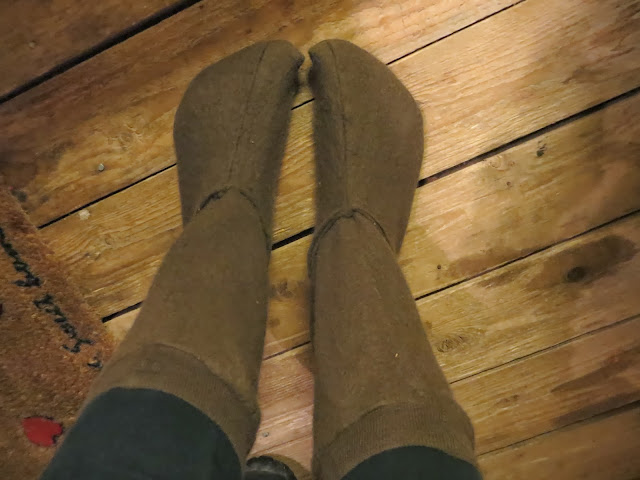Perhaps one of my most anticipated professional challenges to date is the making of traditional Norwegian kransekaker: a Jul-time treat of baked almond-paste rings that stands 18 tiers tall! Dessverre (unfortunately), I do not have a trusted homemade recipe to share, as the thick dough for our kransekaker rings came premixed from Odense, the same company that provides our marzipan products. However, a quick google search revealed that people are mixing kransekaker dough at home, and so you can seek out a recipe to try yourself. My chief challenge as a konditor, and therefore the bit I will focus on here, was to assemble the towers in a manner that looked masterful enough to sell. Tough to do on the first few tries as an American who had never even seen a kransekake before!
As an added challenge, I had to use a gigantic, ancient, dusty compressor pump to spit out the long tubes of dough in even snake-like forms so that each ring would be of uniform thickness. I didn't manage to capture that step of the process, so you will have to use your imagination. Perhaps just as well, as the pervading sense of it was it's deafening volume: the compressor itself popped and whirred like a wheezy old Frigidaire, and the dough was piped out of a metal pastry gun about two feet long. This is certainly as industrial as my baking experience has ever been. And yet the assembly process was so delicate in comparison that it eventually won out to make each individual cake feel like a separate endeavor. Thus, the challenge and the joy of kransekaker, to my mind, are one and the same: assembling the tower.
 |
| The baked rings. |
Start with your 18 rings, taking care to keep them in proper order so your don't mix up your sizes. Mix a thick batch of confectioner's sugar, water and lemon juice or vanilla for flavor. You want it to just flow so that you can pipe it without trouble, but still stiff enough that it won't drip down the sides of the cake. I cut a very teeny hole in the tip of my piping bag, so that the ribbon of icing would look delicate and lacy. Start by applying a single line of icing to the bottom of your base ring, and using that to glue it to the base you are building on. Then, begin piping a squiggly pattern around each ring.
 |
| One nice squiggly line… this is harder to do than it looks, but with patience it is totally possible! |
As you stack the rings, you want to make sure you keep checking to see if the tower is building up straight. One simple trick to foil your body's own quiet tendencies to favor one direction or another is to turn the cake one quarter turn after adding each layer. But I still check the progress from "ground level" frequently.
 |
| Looking good... |
 |
| Still looking ok... |
 |
| Santa says every thing feels alright from the top! |
Once you have the 18 rings stacked, give Julenissen a solid spot on top. Now, if you did have any trouble with slightly wonky layers, you can do a little to hide this when you apply the final decorations: Christmas crackers and flags.
And that's how Norwegians celebrate.
 |
| I like these special kransekake-sized boxes. |
 |
| And check out that amazing Christmas-cracker print! It looks like it came off the set for Kids Incorporated. |


















